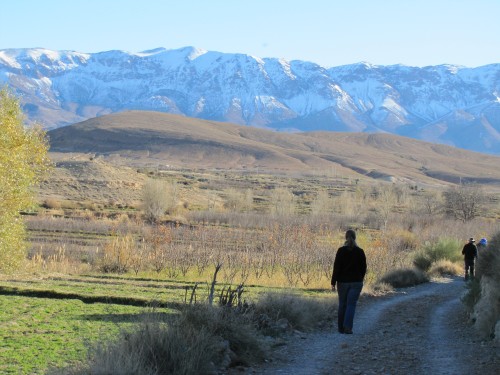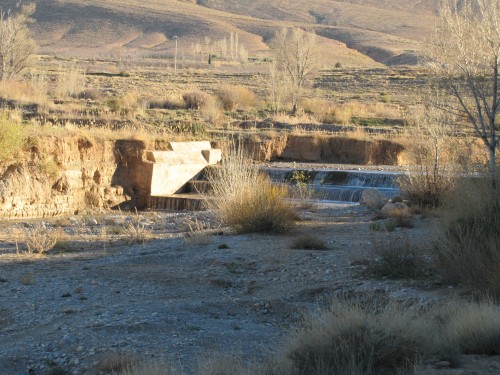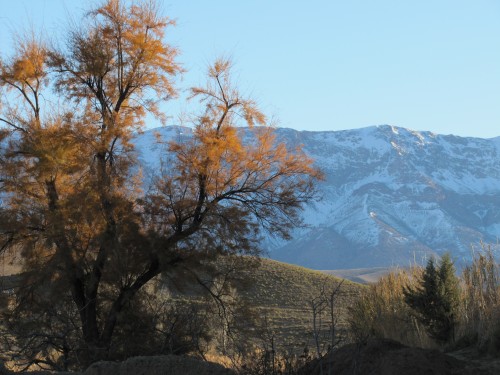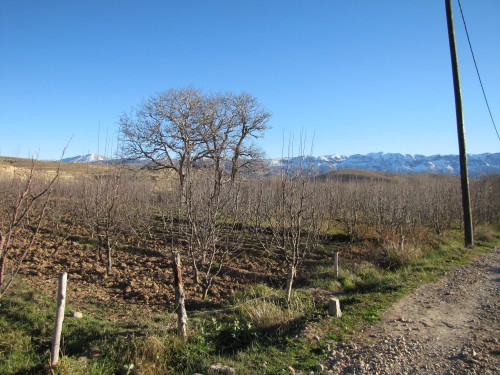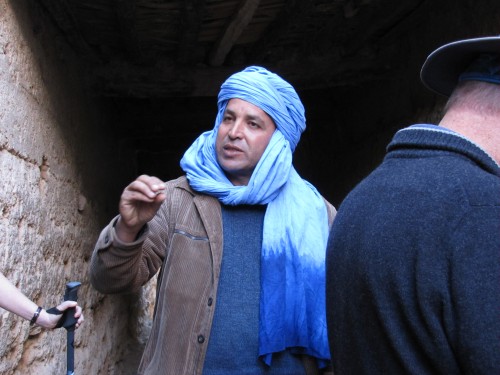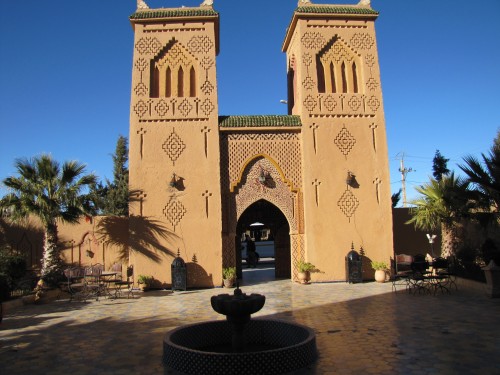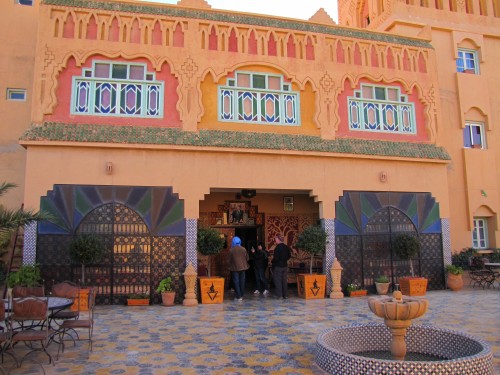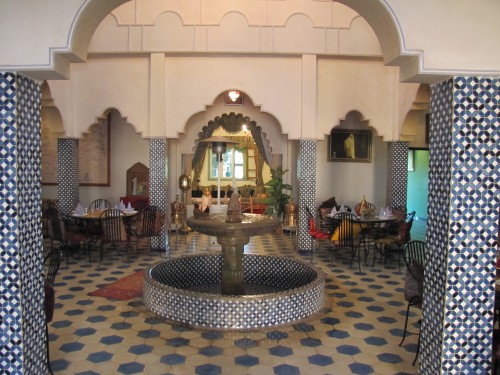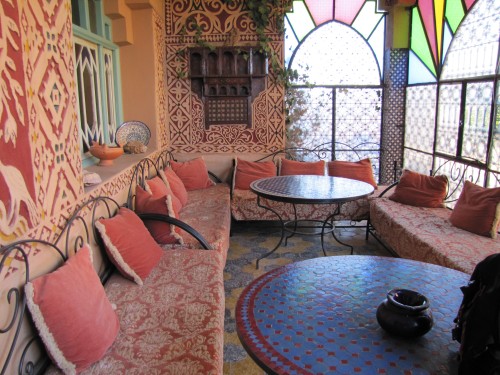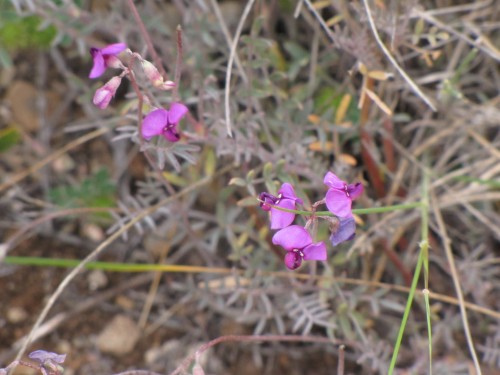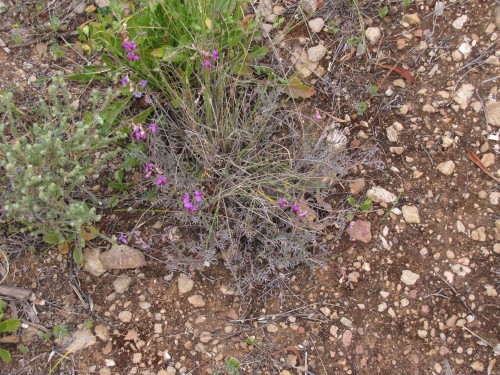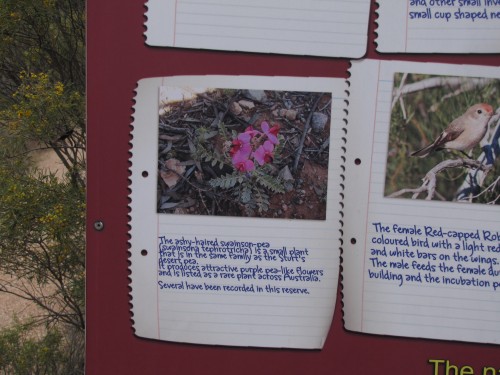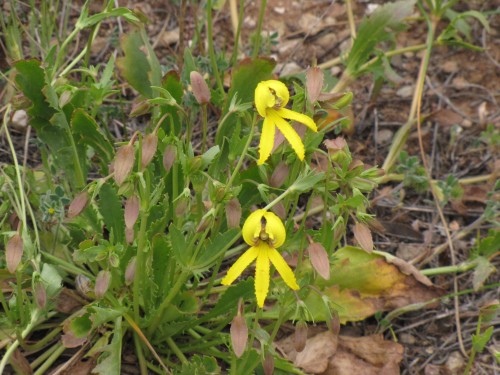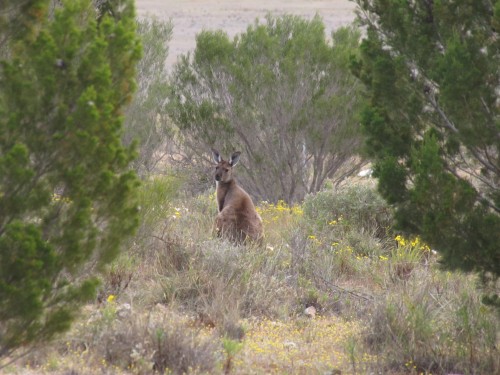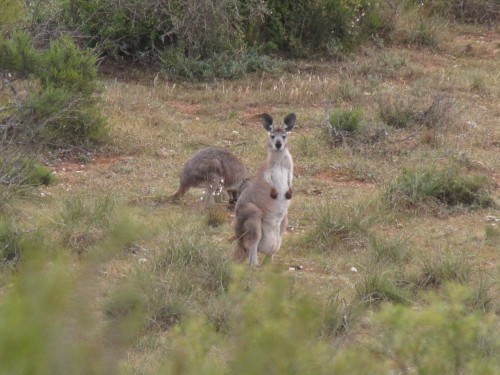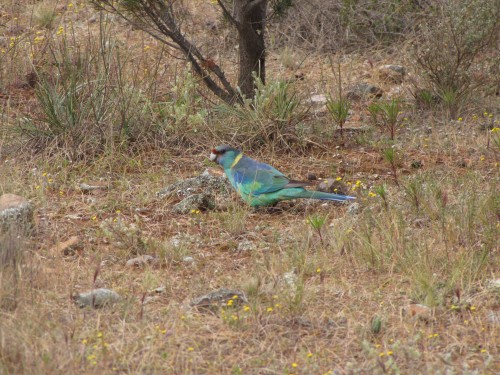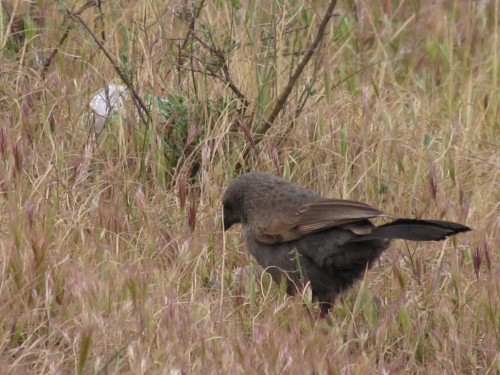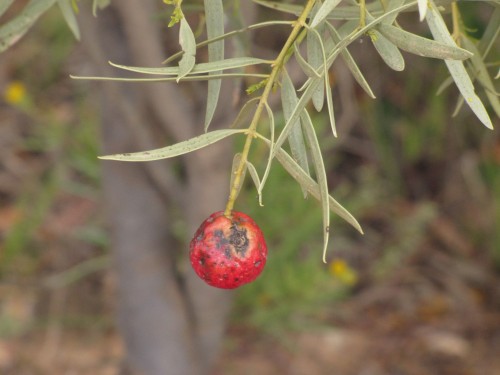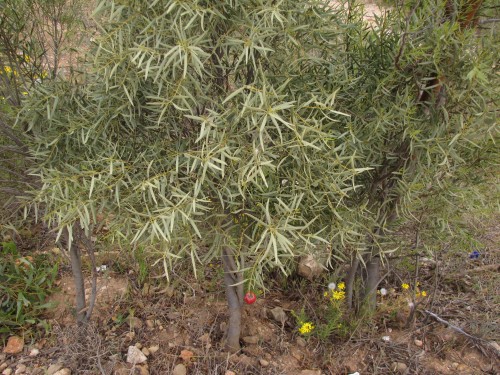A walk in the Moroccan farmland
After our overnight stay in the central Moroccan town of Midelt our tour bus took a short drive off the highway and through some of the local farming districts. We stopped and then went on a short walk through some farms. I always found it interesting on our tour of Morocco and Spain to compare these countries with the rural areas I know so well here in South Australia. There are many similarities except for the style of houses and the imposing Atlas Mountains shown in the photo above.
And you don’t see too many donkeys here in South Australia.
One of the farms (shown below) was obviously an orchard of some kind. I am guessing that it is likely to be apples growing here. The area around Midelt is a plateau between the Middle Atlas and the High Atlas Mountains. The higher altitude – over 1500 metres – would be most suitable for apple growing.
The final photo today is of our tour guide, Said. He was a wonderful guide willing to share his local knowledge of all things Moroccan. He lives in Marrakech with his family. He actually left his wife with a week old baby to go on our tour.
A comfortable hotel in Midelt, Morocco
It has been quite a while since the last time I shared some of my photos and experiences while travelling Morocco. Over coming days and weeks I intend continuing with this series subject to my health. For all of the old photos and articles go to my archives (see task bar under the title).
Our overnight stay in Midelt was a memorable one. One of the more beautiful places we stayed in was the Hotel Kasbah Asmar. As usual in Morocco mosaics feature prominently in the buildings. Our hotel was no exception as the photos below illustrate. Our room was comfortable and spacious and we slept well. We did try to do a bit of hand washing in the bath tub and we were worried that it would not dry overnight. Hanging it in front of the heaters certainly helped in this. The food was also a feature and was delicious – like everywhere we stayed in Morocco. The sumptuous spread for breakfast was one of the best.
Midelt is an easy drive east of Fes and is situated between the Middle Atlas and High Atlas Mountains on a high plateau making it one of cooler towns in Morocco. There is often snow on the surrounding mountains in winter. It certainly was cool when we were there in late December.
Midelt is a relatively new town of some 45,000 population. It is a commercial centre for the local mining industry with gypsum, lead and other minerals being mined in the region. Fossils are also mined in this area and these are made into all kinds of objects for sale, mainly to tourists. The town also supports a large agricultural industry. Farmers bring their produce into the local market. Locally grown fruit and vegetables as well as goats and sheep for meat and wool are the main farm products.
Wildflowers near Peterborough
The wildflowers I saw and was able to photograph in this reserve were a delight. The reserve in question was the Greg Duggan Nature Reserve just north of the township of Peterborough in the mid north of South Australia. Over recent weeks I have shared many of the photos I took there in September last year.
Today I am sharing a few more photos, including the beautiful pea flower shown in the photo above and below. According to the interpretive sign near the entrance (see below) this particular species is rare in Australia, and that there are several specimens in the reserve. I managed to find several in the reserve plus about a dozen or so on the roadside verge near the entrance, most of them flowering.
With a size of only 10 acres this is a great little nature reserve protecting some of the local wildflowers. It is an region where there are very few areas set aside to maintain a viable pool of local flora. This makes this .a valuable reserve along with roadside verges in the district.
But it is not just the wildflowers it protects. A few days ago I wrote about the great diversity of fauna in the area, especially the birds, reptiles and insects. It is therefore pleasing that the local council has protected this area and continue to maintain it. As a bonus, it is a delightful spot for visitors like myself to enjoy.
Wildlife in the Greg Duggan Nature Reserve
Kangaroos
The wildlife in the Greg Duggan Nature Reserve in Peterborough, South Australia is quite diverse. Over recent weeks I have been sharing some of the wildflowers I photographed there in September last year. Despite being only 10 acres in size, the fauna is also quite interesting as well. When I visited a small mob of Western Grey Kangaroos was grazing contentedly on the grasses thriving in the park. The female in the photo below looks decidedly like there is a joey in her pouch.
Introduced Mammals
While I didn’t see any other mammals on this visit apart from several rabbits there are sure to be also a few other introduced mammals in this reserve and nearby, including:
- Red Fox (common)
- Brown Hare (common)
- House Mouse (common)
- Black Rat
- Feral House Cat (widespread)
- Goat (present in large numbers further north in the Flinders Ranges)
- Fallow Deer (small feral populations in nearby Jamestown area)
Native Mammals
- Western Grey Kangaroo (common)
- Echidna (probably present in this area)
- Several Bat species (common)
- Brushtail Possum (possibly present)
Reptiles:
I am no expert in this field but there are many species of reptiles in the wildlife of this area, including:
- Snakes – the common species would be Brown Snakes, but there must be others
- Lizards – many species including Blue-tongues, Stumpy-tailed, geckos, skinks and so on
Insects:
Again, I am no expert in this field but I have casually observed a variety of
- butterflies (see photo below – I haven’t been able to identify this one)
- moths
- grasshoppers
- many kinds of beetles, bugs and native cockroaches, to name only a few.
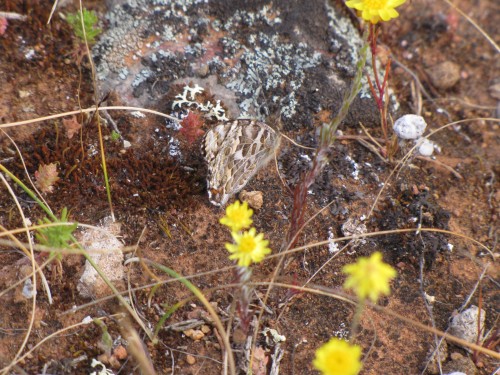
Butterfly or moth? (Hard to see – it is right in the middle of the photo just above the two flowers)
Birds:
This is one area of wildlife where I do have a great deal of knowledge in this area. In all, there are probably well over 150 different species of birds in the region – say, within a 20km radius. Included in this list are a few waterbirds (present in dams and a wetland area near the caravan park), eagles, hawks, pigeons, many species of honeyeaters, chats, babblers, parrots, thornbills, magpies, ravens, woodswallows, finches and the list goes on.
I have included only two photos today (see below). Of special note is the Apostlebird, an uncommon species in South Australia. The township of Peterborough has several large family groups of this species and is one of only a handful of places in the state where they can be reliably seen. The are very common in the eastern states, however.
Wild peach tree near Peterborough
It is always a delight to see fruit on wild peach trees in South Australia. The bright red fruit the size of a small apricot stands out in the drab grey/green of much of the natural vegetation in the drier parts of South Australia. The trees are relatively common throughout our state in bushland, bush reserves and roadside verges.
This delicious fruit – also known as the quandong (Santalum accuminatum) – grows just up the road from our front gate here in Murray Bridge but I haven’t checked out the trees in recent times to see if they are fruiting. The tree and fruit shown in today’s photos is growing in the Greg Duggan Nature Reserve near Peterborough. I have been posting photos of the wildflowers in this reserve over recent days (look back through my archives to see them).
The quandong fruit can be eaten straight from the tree but can be a little on the dry side for my taste. It is also prone to infestation from grubs, so biting into a wild peach can ensure an extra element you hadn’t bargained for! Where this fruit really excels is when it is used to make a quandong fruit pie. Eating the pie slightly warm with cream or icecream is heaven in a bowl. Trust me.
Interestingly, some orchardists have attempted to produce this fruit commercially in recent years. I am not up to date about how successful they have been because the growing requirements for this plant are quite demanding, in so much as they need a host plant.
The photos on this post are not as good as one my wife took some years ago and posted on her site about Australian Native Plants here. She has written another article about the species here.
Wild peach tree (quandong)
